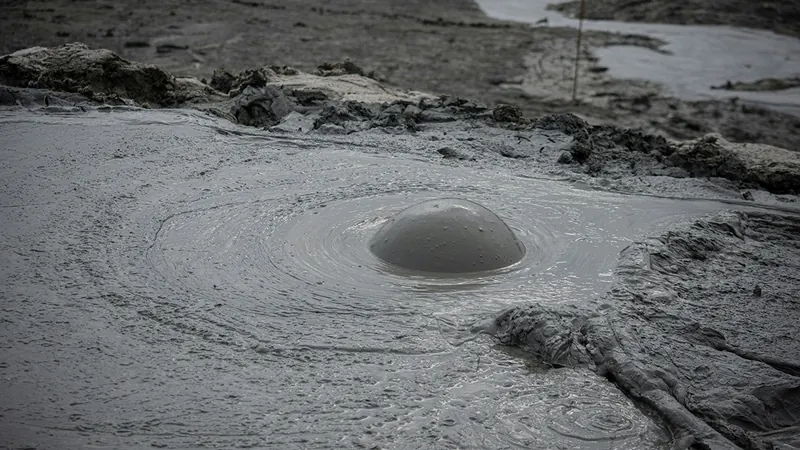
Unveiling the Secrets of Submarine Mud Volcanoes: A Global Mapping Breakthrough
2025-07-10
Author: Rajesh
Discovering the Unseen Hazards Beneath the Waves
Often overshadowed by their fiery kin, mud volcanoes are quietly bubbling beneath our oceans, posing unique hazards and suggesting dynamic geological processes at play. A groundbreaking team of geologists has recently unveiled a comprehensive map of submarine mud volcanoes, potentially reshaping our understanding of these intriguing formations.
A Global Inventory in the Making
In a study published in *Scientific Data*, researchers charted over a thousand mud volcanoes lurking in shallow seas, with estimates suggesting that millions more remain hidden in the depths of the world's oceans. "This marks the first time all existing data on these formations has been compiled into one accessible dataset," states Daniele Spatola, a marine geologist from Sapienza University in Rome.
Gas and Mud: The Eruption of Submarine Volcanoes
Unlike traditional volcanoes, mud volcanoes erupt a mix of gas, sediments, water, and organic materials rather than molten rock. These emissions can be significant, contributing to methane release and potentially affecting local water acidity levels—a factor which climate models often overlook.
The Geographic Puzzle: Where Are They?
The inventory reveals most mud volcanoes (65%) are found in the Mediterranean Sea, likely due to the region's extensive oil and gas prospecting. Yet areas like the Atlantic remain underexplored, suggesting there may be many undiscovered formations waiting to be mapped.
Sizing Up the Volcanoes
The database indicates that about 60% of the mud volcanoes are medium-sized, measuring between 0.5 and 9 square kilometers, with giant volcanoes—those over 20 square kilometers—being exceedingly rare. A notable cluster of these giants is located near Japan, where tectonic plates converge.
Mapping the Future: What’s Next?
The researchers encourage collaboration from the scientific community to enhance and refine this dataset. With much of the ocean floor still unmapped, there’s a treasure trove of information waiting to be uncovered. As Spatola emphasizes, understanding the geological features of mud volcanoes could greatly inform safety measures for coastal infrastructure.
Charting the Depths – A Call to Action
While the newly created database serves as a strong foundation for future studies, it also underscores the need for advanced mapping technologies. With oceanography's frontier a mere few dozen meters beneath the surface, the quest to unveil the mysteries of our planet’s underwater landscape is only just beginning.



 Brasil (PT)
Brasil (PT)
 Canada (EN)
Canada (EN)
 Chile (ES)
Chile (ES)
 Česko (CS)
Česko (CS)
 대한민국 (KO)
대한민국 (KO)
 España (ES)
España (ES)
 France (FR)
France (FR)
 Hong Kong (EN)
Hong Kong (EN)
 Italia (IT)
Italia (IT)
 日本 (JA)
日本 (JA)
 Magyarország (HU)
Magyarország (HU)
 Norge (NO)
Norge (NO)
 Polska (PL)
Polska (PL)
 Schweiz (DE)
Schweiz (DE)
 Singapore (EN)
Singapore (EN)
 Sverige (SV)
Sverige (SV)
 Suomi (FI)
Suomi (FI)
 Türkiye (TR)
Türkiye (TR)
 الإمارات العربية المتحدة (AR)
الإمارات العربية المتحدة (AR)